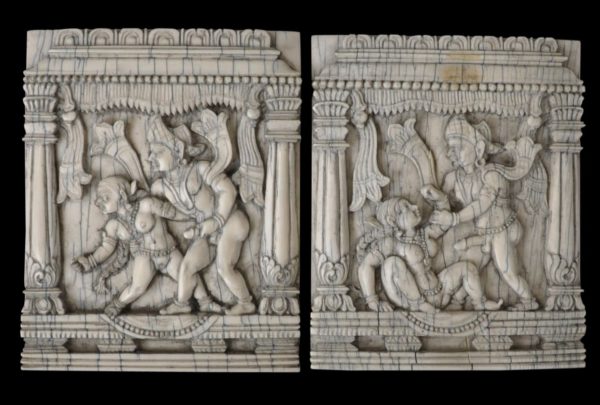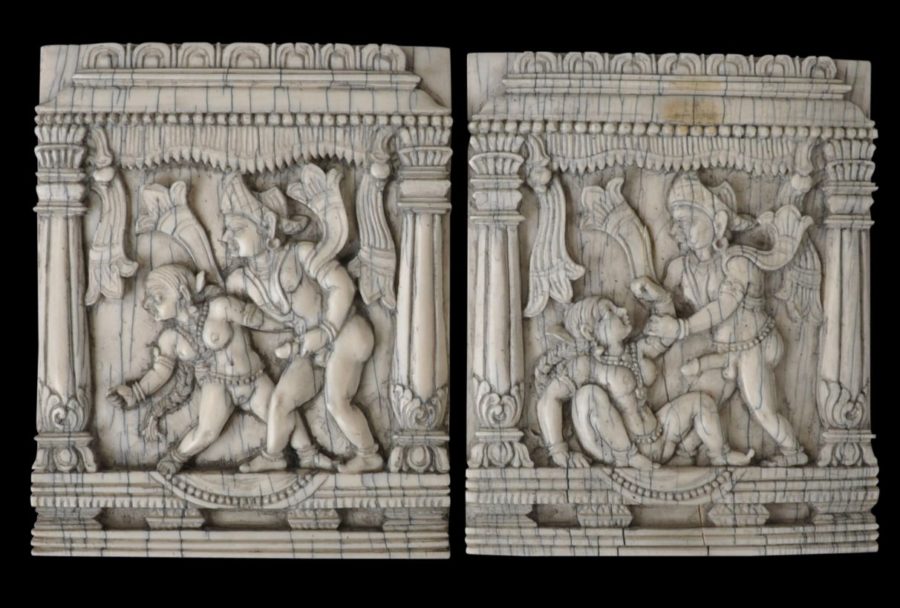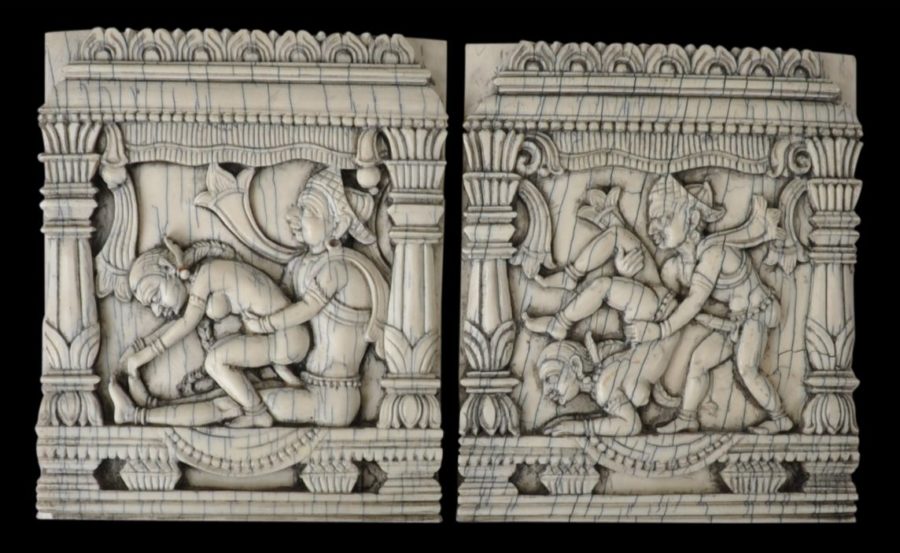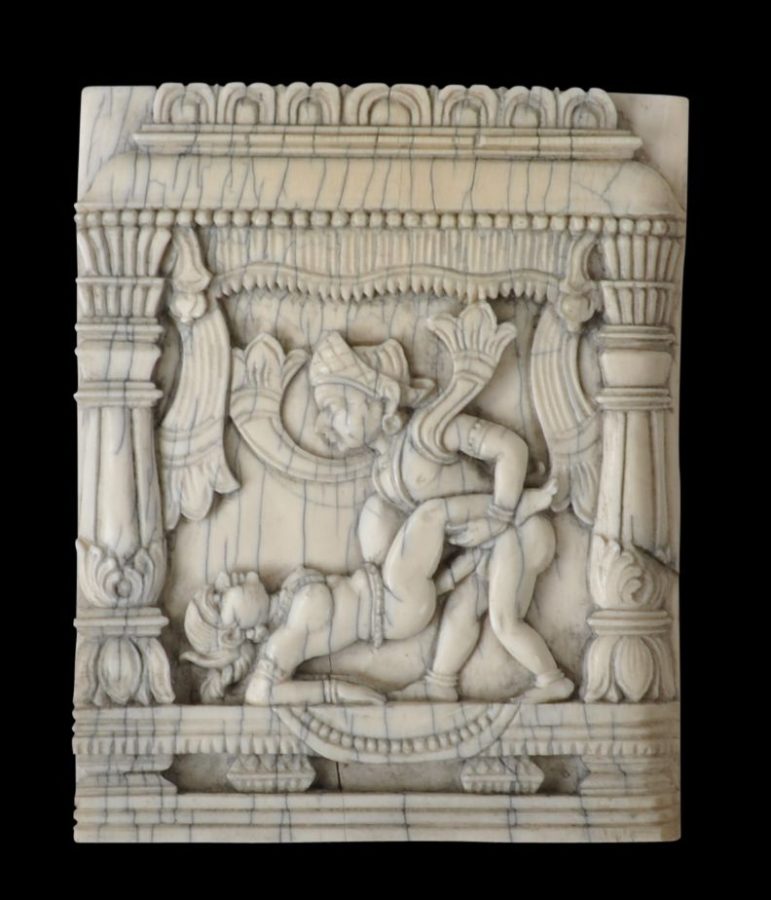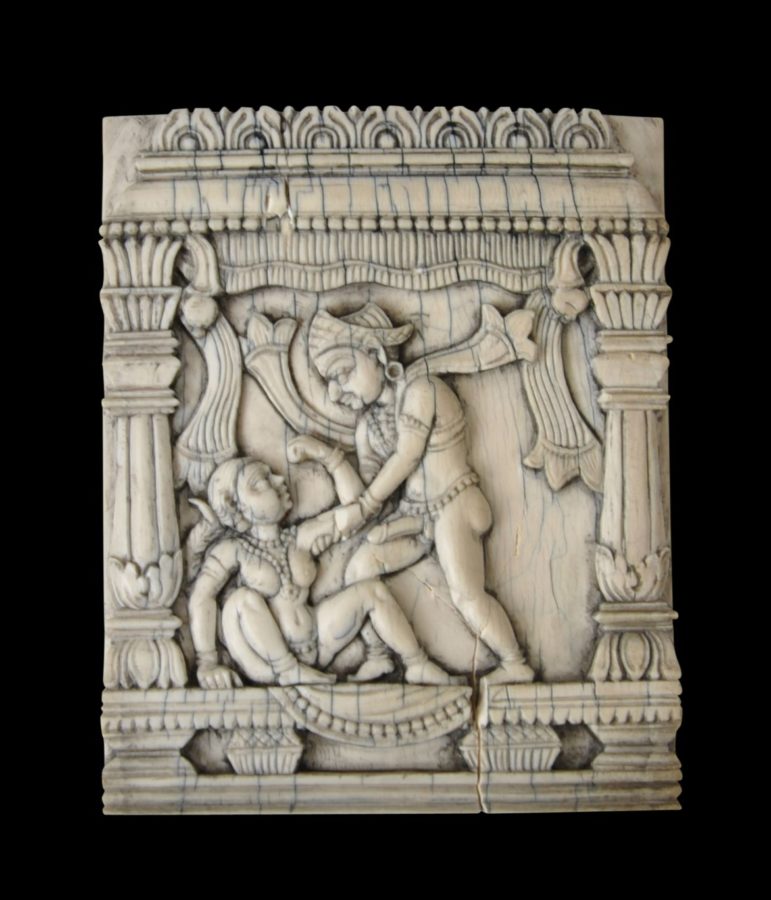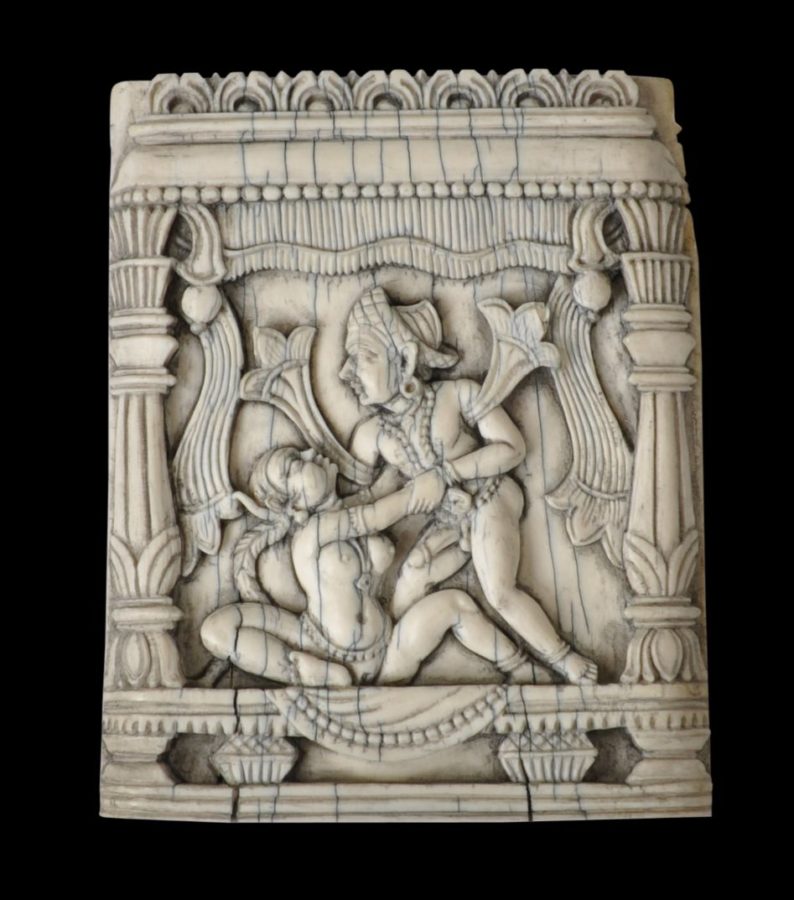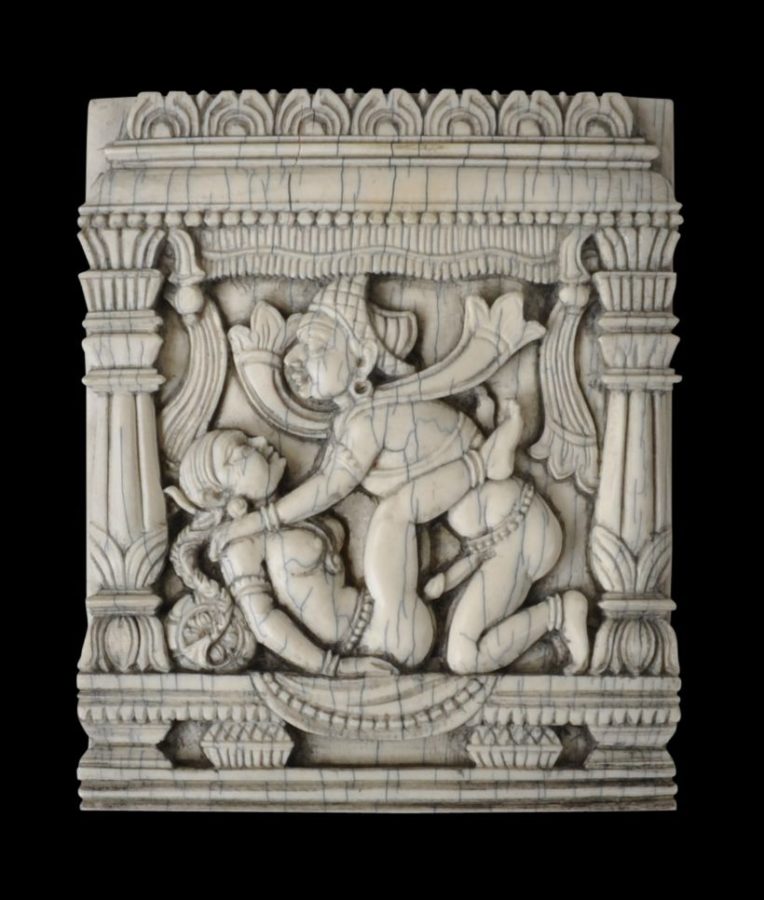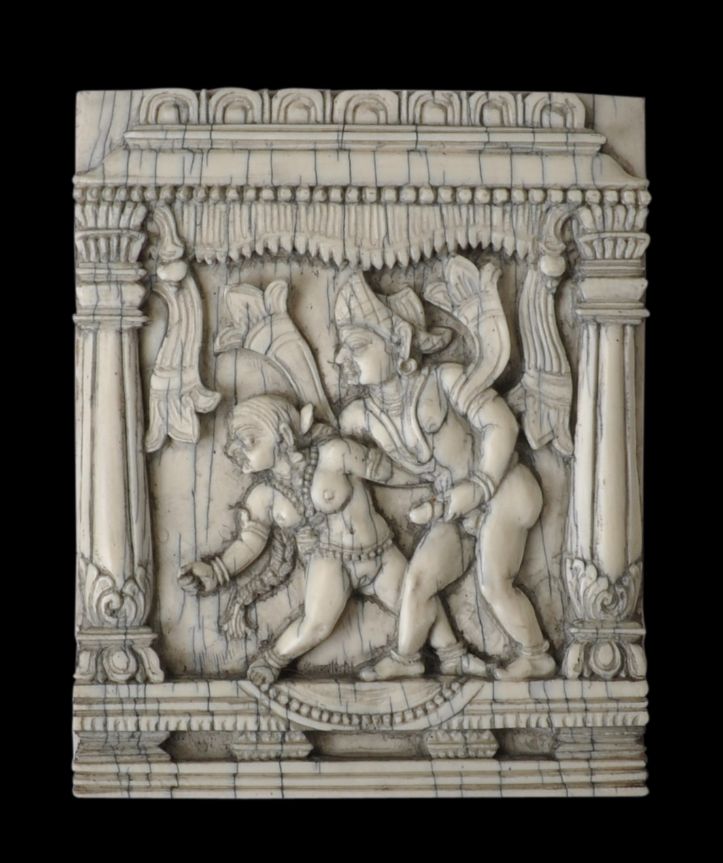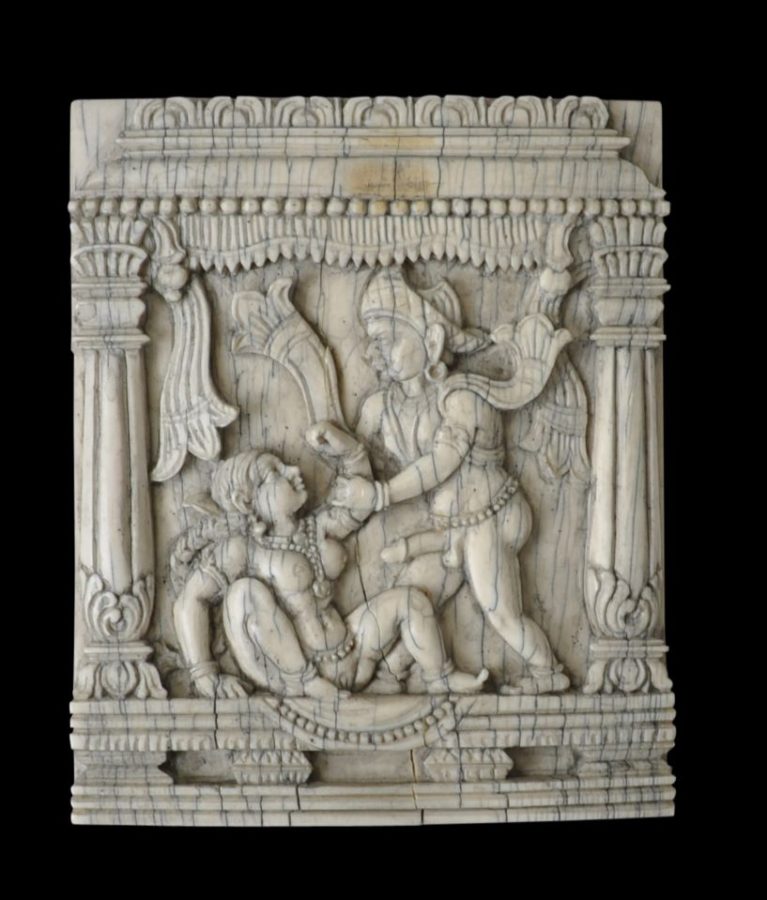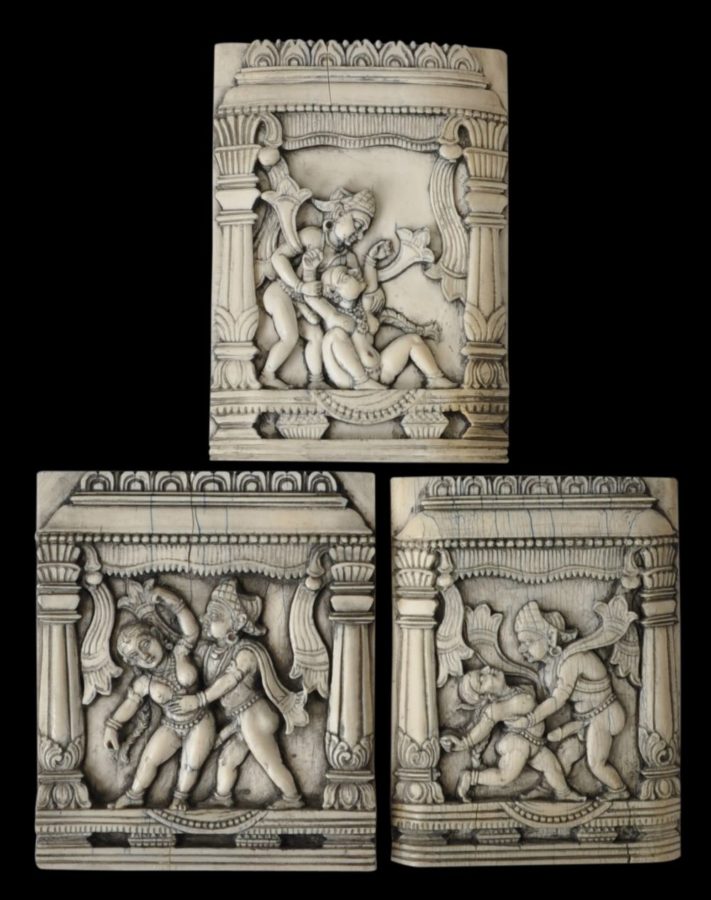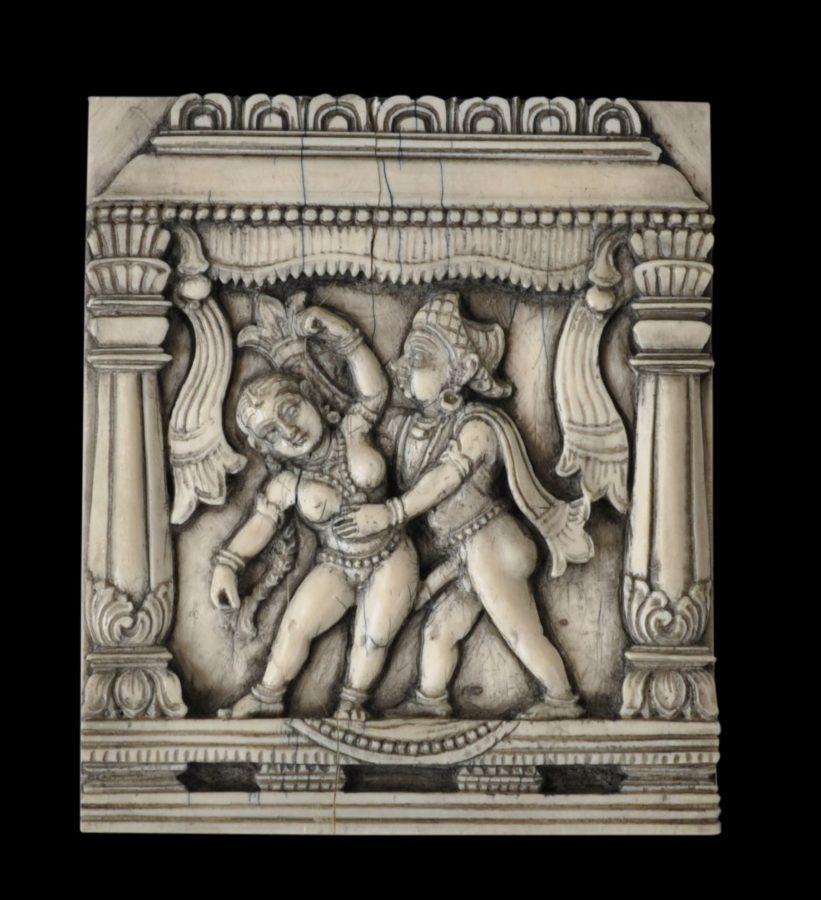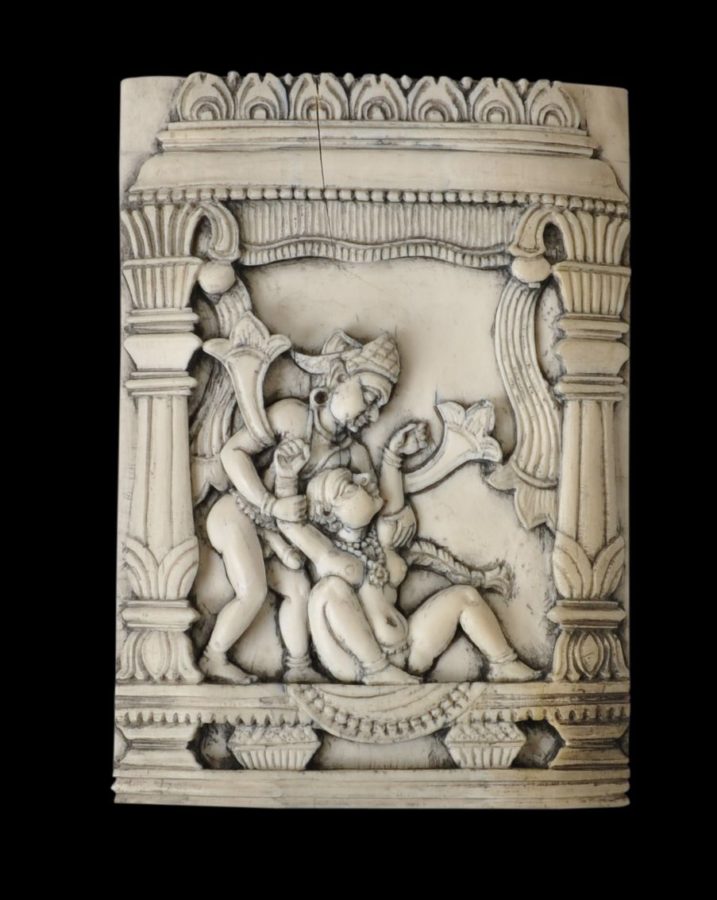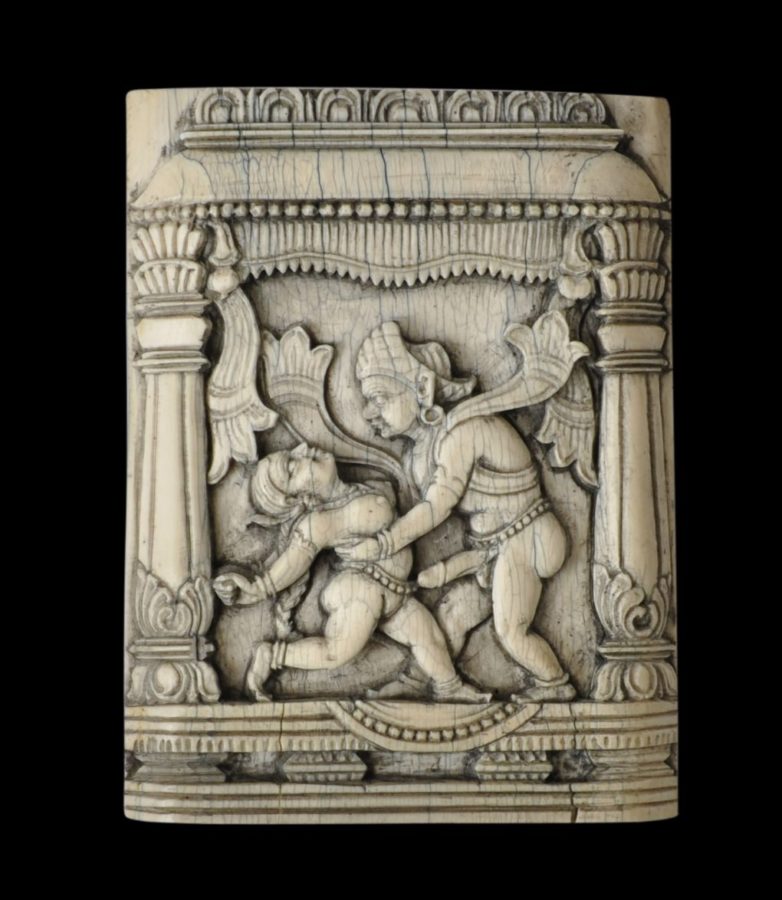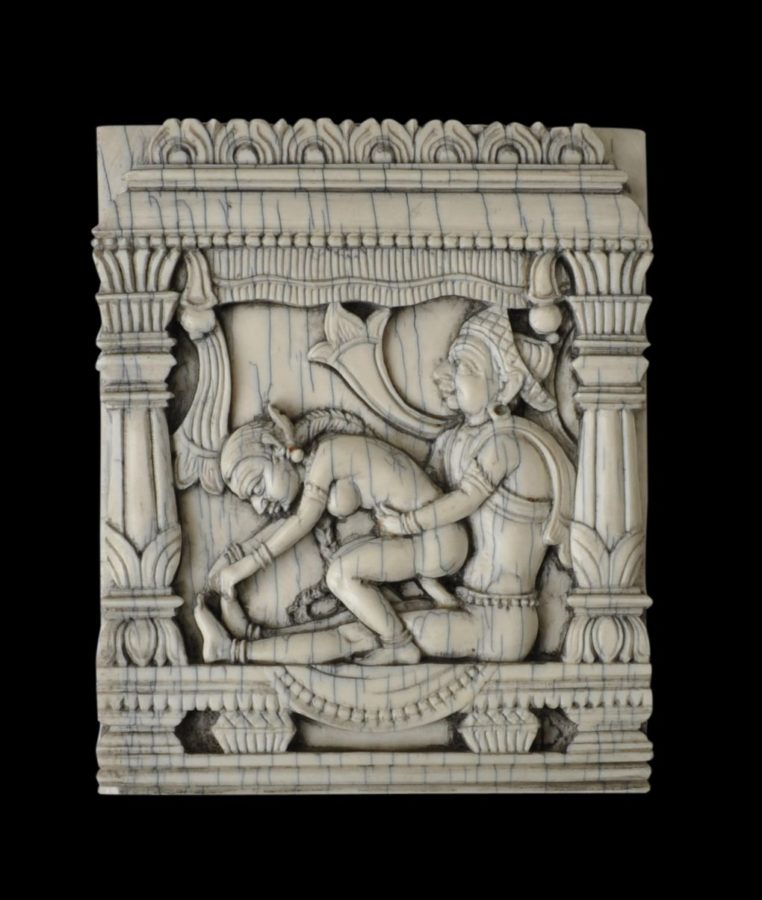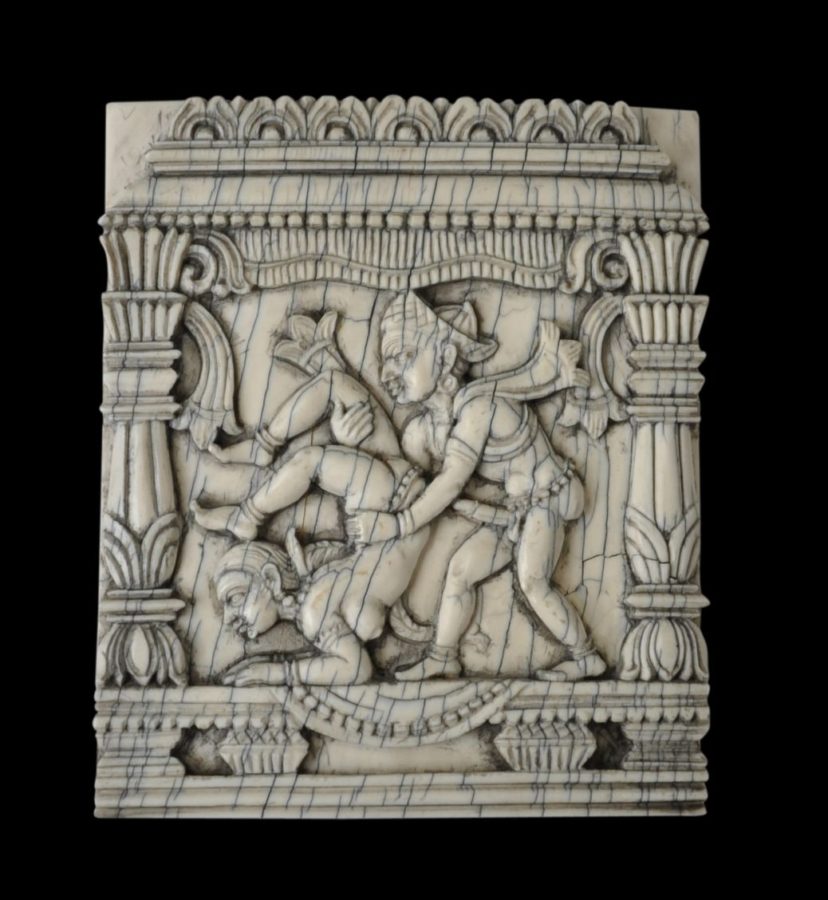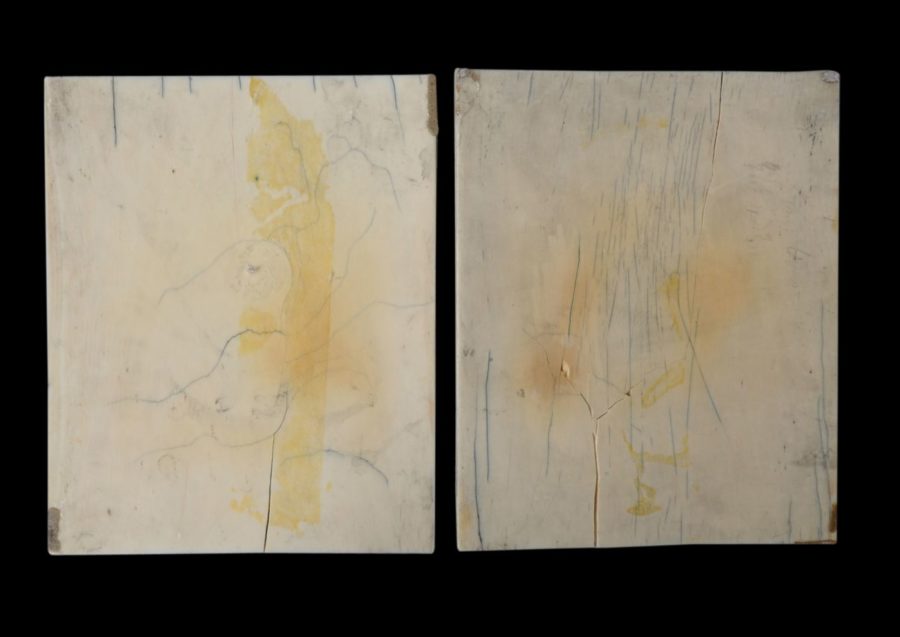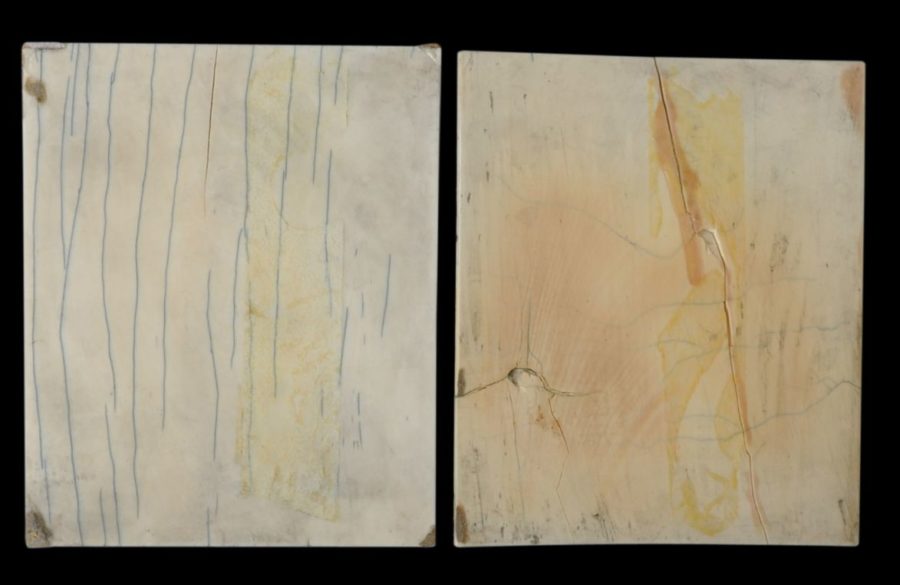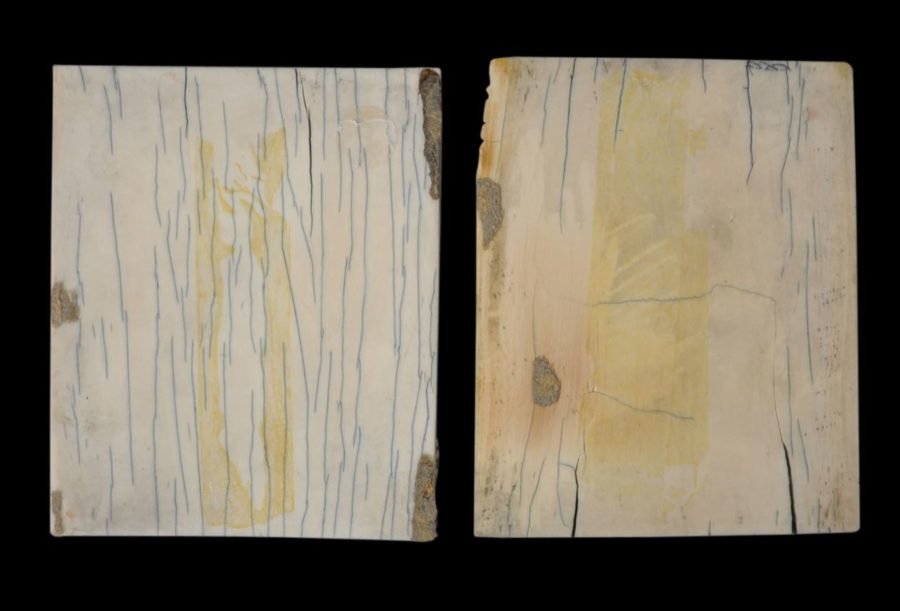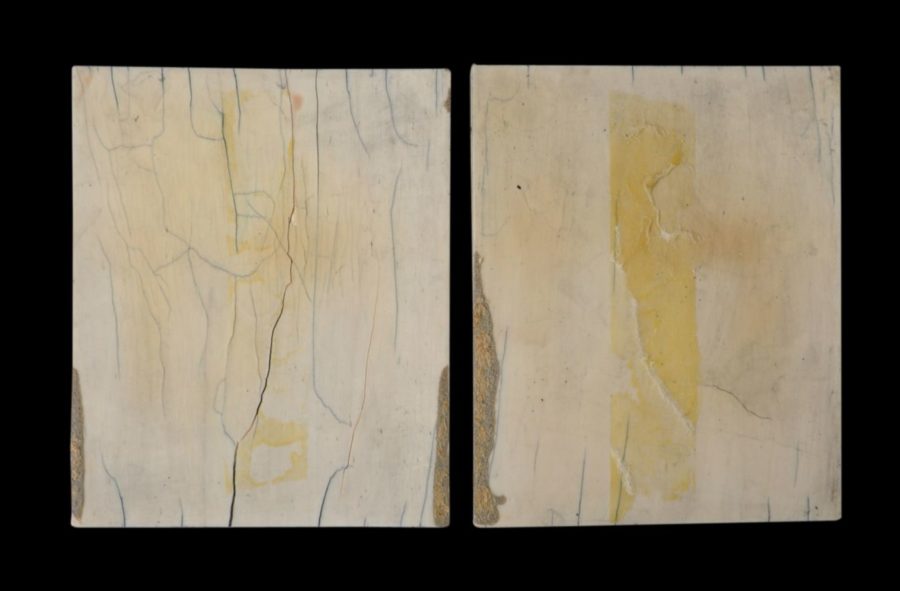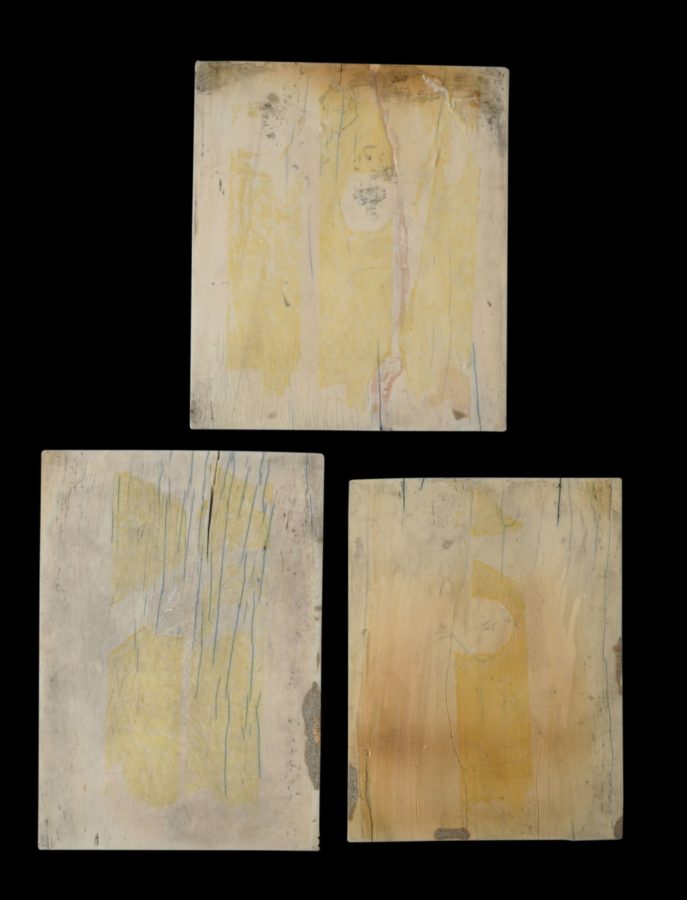Each of these finely carved panels comprises a single piece of ivory that has b=been carved in high relief with an erotic scene. Each comprises a couple shown on a dais within columns and beneath an elaborate canopy.
Originally panels such as these were made to adorn beds or sleeping platforms that dated to around the 18th century.
The panels here are probably later, largely on account of their more explicit motifs. The panels were obtained in India in the 1920s and we believe that they date to the second half of the 19th century. Possibly, their more explicit content was carved with the colonial market in mind.
The carvings themselves undoubted draw inspiration from the ancient bas-relief stone erotic carvings at the temple complex in in Khajuraho, Madhya Pradesh, India. These temples were built by Chandela dynasty between 900 AD and 1130 AD and were dedicated to both Jainism and Hinduism.
It is possible that the Chandela rulers followed Tantric principles, and commissioned the temples to harness balance between the male and female forces, as expressed through the mutual enjoyment of physical union. The temples portray women so openly enjoying sexual pleasures that some scholars have suggested that the temples were in part intended to be seen as a celebration of female power.
Each panel shows evidence of having been framed with remnants of adhesive on their reverse and so on. Most are in fine condition. There are minor losses here and there. There is some age-related light cracking from shrinkage.
References
Hegewald, J.A.B., Jaina Temple Architecture in India: The Development of a Distinct Language in Space and Ritual, Verlag Berlin, 2009.
Jaffer, A., Furniture from British India and Ceylon: A Catalogue of the Collections in the Victoria and Albert Museum and the Peabody Essex Museum, Timeless Books, 2001.


